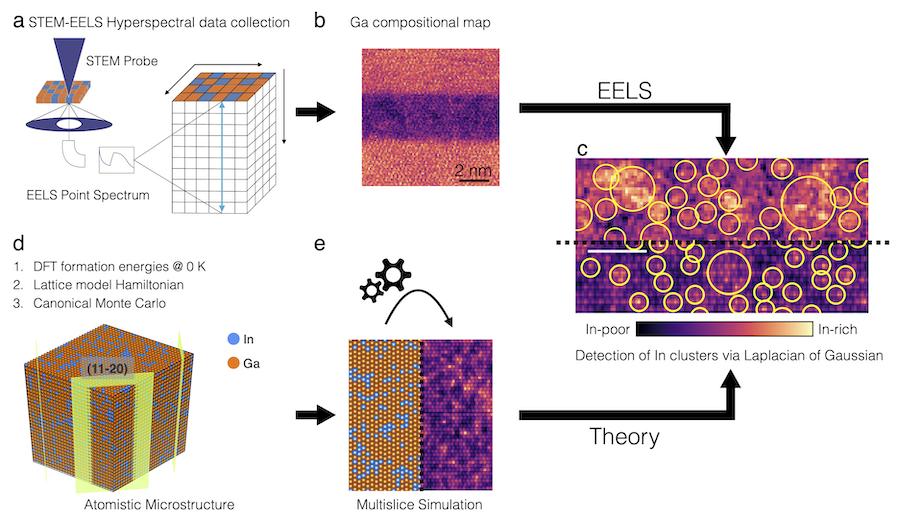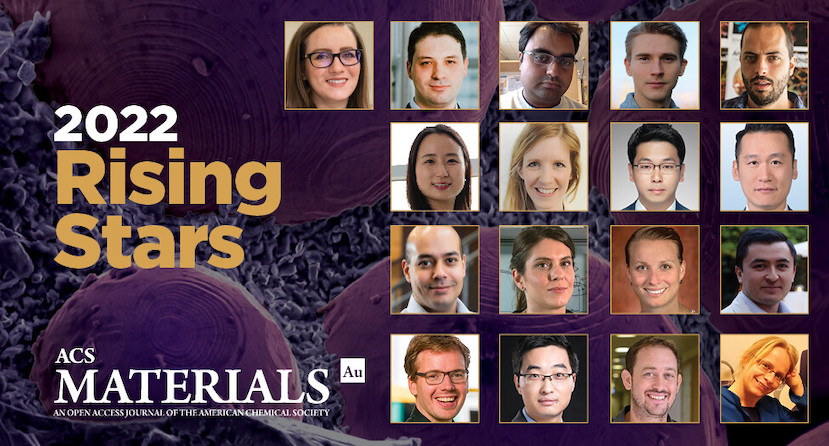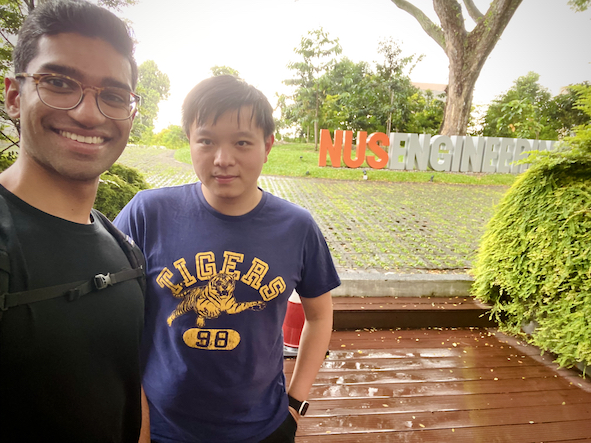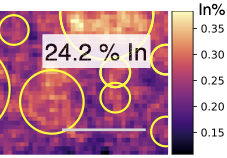On February 5th, the research work of Mr. Tara P. Mishra entitled Unlocking the Origin of Compositional Fluctuations in InGaN Light Emitting Diodes was published in Physical Review Materials. Tara developed a powerful methodology to detect the formation of In clusters in high Indium content InxGa1-xN LEDs quantum wells (QWs). His study showed a direct comparison between the computationally predicted and experimentally observed compositional fluctuations.

Autonomous detection of compositional fluctuations in InxGa1-x samples.
He found that although a random alloy model captures the distribution of compositional fluctuations in relatively low In (~18%) content InxGa1-xN QWs, there exists a striking deviation from the model in higher In content (~24 %) QWs. The results highlight a distinct behaviour in carrier localization driven by compositional fluctuations in the low and high In-content InxGa1-xN QWs, which would ultimately affect the performance of LEDs.
The full manuscript can be found here.







